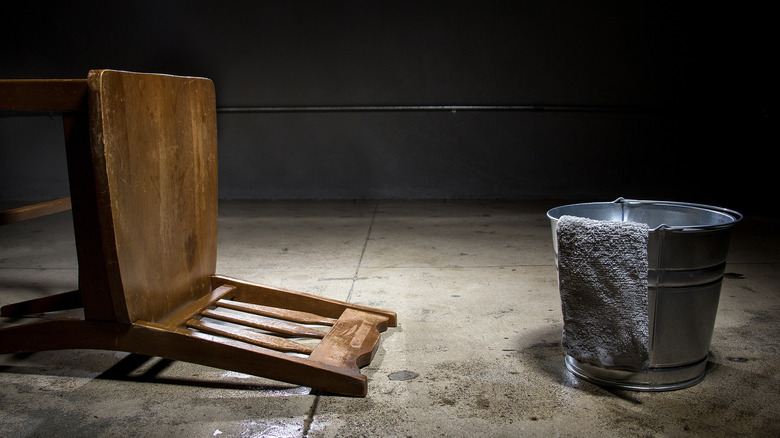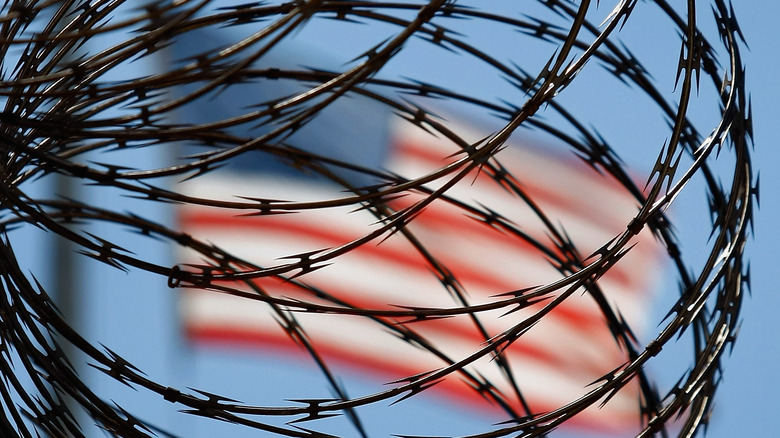The CIA's Secret Torture Files Explained
In 2019, lawyers for Guantanamo Bay detainee Abu Zubaydah released a shocking report revealing that the CIA's torture program was even more brutal than we had previously thought. According to The New York Times, the 61-page report titled "How America Tortures" included drawings by Zubaydah depicting the various forms of torture he was forced to endure. As far as the public knows, Zubaydah was the first detainee to be waterboarded by CIA agents, and he went through the terrifying experience 83 times.
Much of his testimony varies greatly from the government's version of the horrors he and others suffered as a result of the CIA's "enhanced interrogation techniques." Although The New York Times initially claimed that the International Spy Museum shows that "Washington doesn't flinch from the darker side" of its history of torture, the paper of record later noted how the image of waterboarding it presented contrasted with what Zubaydah drew. The museum's watered-down image, which went on to become the image in pop culture, is of a man in a prison jump suit getting a pitcher of water dumped over his towel-covered face. Zubaydah's drawings, by contrast, are much more graphic. They show him strapped to a bed naked with a gash running down his left thigh and his right foot painfully contorted. His drawings of the other forms of torture he experienced similarly tell harrowing tales that threaten to undermine the idea of the United States of America as a force for good in the world.
Other forms of torture used in the CIA's 'enhanced interrogation' program
Abu Zubaydah was detained and tortured at several U.S. secret prisons for four years. He was never charged with any crime. His drawings include depictions of several different forms of torture that were used on him at Guantanamo Bay and a CIA black site somewhere in Thailand. In addition to his haunting portrayal of waterboarding, he also submitted drawings of being put in a stress position in which his hands were shackled to a bar over his head and he was made to stand on his tiptoes (also with the wound in his thigh). In a tactic known as walling, an agent held a towel around his neck as he slammed his head into the wall. When he lost consciousness, the agent would yank him up again by the towel and repeat the process. (The interrogator's face in the drawing was censored with a black box before it was released.)
Zubaydah was also forced into painfully uncomfortable positions in large and small confinement boxes for hours on end. In the larger box, he was forced to sit naked atop a bucket he could use as a toilet. He was also bound in uncomfortable horizontal positions that prevented him from sleeping. Although the CIA had promised it wouldn't ever deprive him of sleep for more than 11 days, he told of experiences of weeks without sleep. Zubaydah's drawings prove that the United States has yet to come to grips with its harrowing history of torture.

